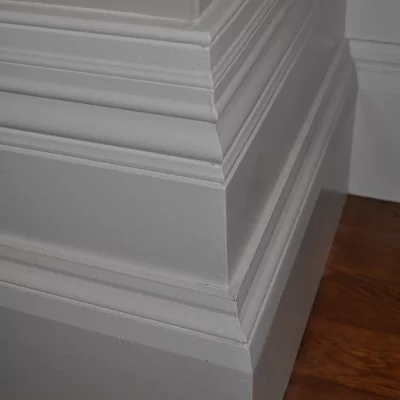Renovating a listed building carries a huge amount of responsibility, and it is a great privilege to be able to play a part in preserving and improving a listed building, but of course there are very tight restrictions on what you are able to do. The Planning Act 1990 designates listed buildings as having ‘special historical or cultural interest’ and while listed buildings can carry different grades according to how ‘special’ and ‘important’ they are, all listed buildings are protected in terms of what renovations you can and cannot carry out.
It is not true that you can’t renovate a listed building, however, but the work you carry out must follow guidelines, and where necessary, must be done with written permissions in the form of a listed building consent. This includes work such as building an extension, exposing beams and timbers and removing period features. However, more minor renovations such as interior painting and replacing period features like-for-like, does not require listed building consent, and therefore that includes replacing items such as skirting boards, architrave and rails.

Not all listed buildings are the same however, and you do still need to be very careful in how you undertake minor renovations such as swapping skirting boards, so here are some tips for how you should go about it:
-
Get advice about painting
Listed building consent is required where a renovation will significantly change the character of a building, so while replacing a skirting board is considered a minor renovation for which you don’t require written permissions, if you then paint it in a contrasting colour which could be deemed to be changing the character of the building, you may not be allowed to do so. It is advisable to contact the local authority before making any changes and certainly to receive advice on what colour paints are acceptable.
-
Retain character
Another aspect of retaining character is the style of the skirting board. A building such as this is listed for a reason, much to do with the style and character, so you must choose a style of skirting board which matches what was originally there. In many cases, a skirting board will be from a distinct design period, such as Victorian, Edwardian or Georgian, and hence you can choose from the range of skirting boards supplied by Period Mouldings, and select a style that is a close representation of the original feature. Choosing the wrong design style will become immediately apparent and will compromise the character of the listed building.
-
Check wall condition
It is essential that any alterations you make do not impact on the fabric of the building, and this includes for minor renovations such as changing the skirting board. You should check the wall condition before even removing the original skirting board, but this also means you need to select the right thickness for the replacement skirting board, so that fixing it doesn’t require excessive force or a bigger size nail than is necessary. This could damage the wall and hence affect the fabric of the building.
-
Remember it’s like-for-like
Replacing a period skirting board in a listed building is not just about retaining character, the dimensions also have to be the same. A homeowner was once taken to court by Hammersmith and Fulham Council because a skirting board in a Grade ll listed building was 0.8 of an inch higher than the previous one. Technically, this was classed as a change too far, so as well as retaining character, make sure the skirting board you are replacing like-for-like is also the same size.
-
Can you undo it?
When making a minor renovation to a listed building such as this, it is always worth considering the possibility that you might have to undo the installation at some stage, even if you have complied with all the permission requirements and listed building consent isn’t required. Using a permanent fixing such as adhesive is perhaps not appropriate in this instance and it may be more advisable to use nails as the fixing, as this better protects the fabric of the building.
-
Good quality materials
Replacing skirting boards in a listed building is a delicate operation for obvious reasons, and the one certainty is that you don’t want to be doing the job twice, so make sure you choose quality materials, so that the skirting board is robust and long-lasting. The replacement skirting boards supplied by Period Mouldings are made from high quality hard and soft woods, and using traditional handcrafted techniques, so you are assured of supreme quality skirting boards.
Contact Period Mouldings for replacement skirting boards in your listed building
If you have a listed building that is undertaking renovation, contact Period Mouldings today and we can advise on the written permissions you need and what replacement skirting boards you should order.

